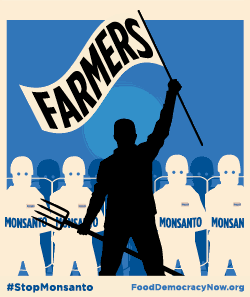An Old Idea That Warrants a Re-Visit
There is an economic theory dating back to the 20's called Social Credit. The man who originally proposed the idea was an engineer, but his idea has mathematical merit. Another great engineer and mathematical genius, Robert Heinlein, expanded and refined the mathematical model. Heinlein is best known for his Sci-Fi these days. Actually, he made his living writing children's' books under a pen name. If you ever read his Sci-Fi, it is beyond "racy".
I have a short description from Wikipedia, but I encourage you to study the idea further.
Don't get caught up in the Anti-Semetic issues that clouded the economic theory. A few crazies of the time gave an idea with merit a black eye. The international banking community seized upon the anti-semetic proponents of the idea to discredit the whole theory. Not good science, but politcally expedient. The theory was pretty much ignored from then on in the U.S.
The mathematics of the model can be a bit heavy, but Heinlein actually does a fair job of simplifying it in some of his writings. It's an idea that speaks to many of the failures of 20th century economic systems.
I'm curious what others think of it. Let me know.
Tweet
I have a short description from Wikipedia, but I encourage you to study the idea further.
Theory
C. H. Douglas proposed that because rate of flow of income received in any period of production was less than the prices generated in the same period there arose a deficiency in purchasing power in that period. He demonstrated this ostensible flaw with his A+B theorem, which states that if A is the payments made to all the consumers in the economy (through wages, salaries and dividends) and B is the payments made by producers that are not paid to consumers (such as the overhead costs of buildings and equipment as they wear out) then the price charged for all goods must be at least A+B , but as only "A" payments are received as income then incomes received were less than prices generated in the same period of production.
For such a system to sustain itself Douglas asserted that some or all of the following must happen:
People go into debt by buying on credit
Governments borrow and increase the national debt
Businesses borrow from banks to finance expansion, in a way that creates new money
Businesses sell below cost, and eventually go bankrupt
A state wins a trade war, putting foreigners in debt to us for our surplus of exports
A state has a real war, "exporting" goods such as tanks and bombs to the enemy without ever expecting to be paid for them, financing this by government borrowing
If these things don't happen "businesses are forced to lay off workers, unemployment rises, the economy stagnates, taxes go unpaid, governments cut back services, and we have widespread poverty, when physically all of us could be living in plenty."
Douglas believed that Social Credit could fix this problem by ensuring that there was always enough money (credits) issued to buy all the goods that could be produced. His solution is outlined in three core demands:
For a "National Credit Office" to calculate on a statistical basis the amount of credit that should be circulating in the economy;
For a price adjustment mechanism that reflects the real cost of production (aggregate consumption in the same period of time);
For a "National Dividend" to give a basic guaranteed income to all regardless of whether or not they have a job.
The engineer argued that this last demand makes sense now that automation and labor-saving devices have reduced the number of workers we need to produce our goods, and the hours they would have to work.
Douglas' ideas enjoyed great popularity during the Great Depression, although not enough to realize his plan.
Some prominent groups and individuals, most notably the poet Ezra Pound and the leaders of the Australian League of Rights, have subscribed to Social Credit as an economic theory, believing that it demonstrated the guilt of "Jewish bankers," who supposedly control the world's economy[citation needed]. Social Credit lays the blame for many economic woes at the feet of private banks, most especially those that practice fractional-reserve banking. Douglas turned to anti-Semitism by the end of the Second World War.[1] Anti-Semitism was not wide-spread among the theory's supporters(emphasis added), although Solon Earl Low, leader of the Social Credit Party of Canada from 1944 to 1961 was a noted anti-Semite.
Later versions of Social Credit theory
Robert A. Heinlein described a Social Credit economy in his first novel, For Us, the Living (published in 2003, but apparently written ca. 1939). (Beyond This Horizon describes a similar system, but in less detail.) The society in the book uses a method to prevent inflation: the government makes a deal with business owners. Instead of increasing prices, they cut prices, and the government (or the Bank of the United States) pays them the difference after seeing their sales receipts. Like the guaranteed income or heritage checks, this money comes out of the inkwell. In the future, the government no longer uses taxation to fund itself. The characters point out that present "fractional reserve" law allows banks to create money (by loaning out many times more money than they have on hand), while in Heinlein's future society only the US government can create US currency.
Robert Anton Wilson proposed another form of Social Credit. His plan aimed to end wage slavery, and began by offering a reward to any worker who designed him-or-herself out of a job. The guaranteed income (or, in the Schrödinger's Cat Trilogy, a lesser reward to all other workers who "lose" their jobs to innovation) would prevent starvation. This income would consist of "trade aids" which would lose numerical value with the passage of time. This official reduction in value would encourage spending and (although Wilson does not state this explicitly) limit price inflation. Elsewhere, Wilson attributed this strategy to Silvio Gesell, who also suggested the government encourage small communities to experiment with alternative economic models. If one of these enclaves seemed especially successful, the country could copy their model in place of Gesell's own plan.
Arguments
Many if not all critics of Social Credit have argued that it would cause inflation.
Heinlein's presentation contains a modified A+B theorem, stressing the argument that all savings remove money from circulation. Wilson does not seem to mention this justification for the plan, stressing instead that the plan (in his view) would end poverty, taxation and wage slavery.
Don't get caught up in the Anti-Semetic issues that clouded the economic theory. A few crazies of the time gave an idea with merit a black eye. The international banking community seized upon the anti-semetic proponents of the idea to discredit the whole theory. Not good science, but politcally expedient. The theory was pretty much ignored from then on in the U.S.
The mathematics of the model can be a bit heavy, but Heinlein actually does a fair job of simplifying it in some of his writings. It's an idea that speaks to many of the failures of 20th century economic systems.
I'm curious what others think of it. Let me know.
Labels: capitalism, economy
Submit To PropellerTweet














